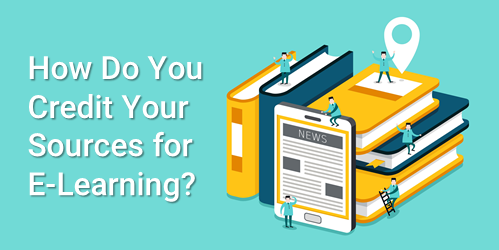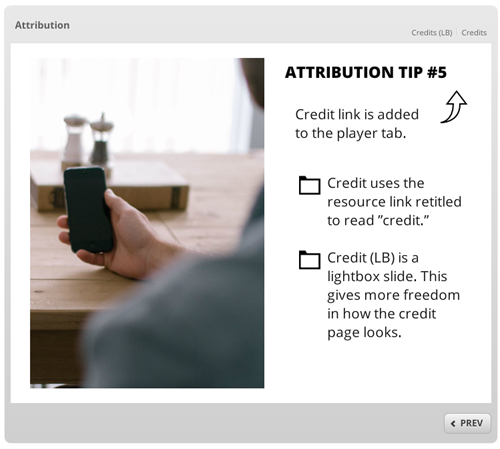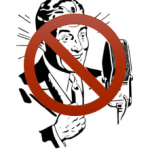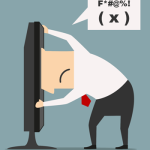Mostly I create an extra slide for the credits at the end of the lesson.
How Do You Credit Your Sources in E-Learning?
August 6th, 2019
We all want to give proper credit to our sources when presenting content. Many of us learned to cite our sources when writing reports for school work or research papers. But does it work the same way for an e-learning course?
I had a great question from a blog reader last week:
I am a relatively new instructional designer, but I was an English teacher for nearly 20 years. When I started my new job, I found that other designers and trainers in my company were just quoting and copying resources without stating where the information came from and this really rubbed me the wrong way.
What are some best practices regarding how to cite sources for e-learning? Is there any guidance out there for something like this? It is a bit weird to stop in the middle of a scenario or game to state where the info originated, but attaching a bibliography in a resource tab seems a bit unclear.
I’d appreciate any thoughts you have.
Credit for Free Assets
I wrote a blog post a while back that dealt with how to credit the source of free assets we find online. We covered a few different ways to give credit to the sources. I assume the mechanics of displaying content on the screen is similar. But that’s still different than citing sources of the content.
Citing Sources for Web Pages
There are a number of places that explain how to cite online sources and some even provide a way to create the citations. But again, a lot of that focuses on research and isn’t specific to an online course.
- Bibme.org has you covered for APA, MLA, and Chicago.
- Citation Machine also provides similar resources.
Big Question: Citation for E-Learning
Creating an e-learning course is different than writing a research paper. And an e-learning course is different than a web site. Is there a different way to do this? I’ll throw the question out to the community and see if we can glean some best practices.
What do YOU do (if anything) when citing sources in your e-learning courses?
Events
- Everyday. Check out the weekly training webinars to learn more about Rise, Storyline, and instructional design.
Free E-Learning Resources
 |
 |
 |
|
Want to learn more? Check out these articles and free resources in the community. |
Here’s a great job board for e-learning, instructional design, and training jobs |
Participate in the weekly e-learning challenges to sharpen your skills |
 |
 |
 |
|
Get your free PowerPoint templates and free graphics & stock images. |
Lots of cool e-learning examples to check out and find inspiration. |
Getting Started? This e-learning 101 series and the free e-books will help. |
8 responses to “How Do You Credit Your Sources in E-Learning?”
I feel the pain from that English teacher who wrote to you – plagiarism is never okay! Sadly, I think social media has taught a lot of people that they can get away with it.
If it’s a quote, I credit the source right below the quote – sometimes in smaller font and with a link when applicable. If information (statistics, data, concepts, etc.) come from other sources, I’ll add an asterisk on the page with a link and/or note “See Resources for more information.” And then the last slide of the course is for resources with details about and links to the sources.
Most of my content comes from SME’s who give me their resource. I keep that with the original content in a file, but do not publish the sources with the content. In case a governing body wants to know where the source was it is available, but the learners do not usually care.
When I use a copyright image or material, I include the source at the bottom of the page. I write to the site owner to request permission to use their material; the message explains who we are, why I want to use their material, and exactly how I will use it. I then archive their permission letter if they agree. If not, I don’t use it.
If the item is an image, I include a bit at the bottom of the page to indicate we have permission to use their material (example attached).
In some cases, I’ve created a Resources page at the end of a module or in a separate tab that indicates where different material has come from so people can go to the source for more information.
We create an Information page with a link on the player. We add two scrolling text boxes: one with information about the author of the course and a second for the sources. I like using the APA Citation Generator app. If we cite statistics or copyrighted/permissioned information, we add a citation on the slide.
Given that most sources are on the web, we generally just hyperlink the author’s name or article name so the user can go read the original material.
On the player tab, I have a Resource button that provides PDFs of citations, references, etc. At the bottom of the slide, I put a number, author’s name, and year. The learner can use that information when s/he downloads the respective PDF.
At the beginning of the course, I explain these things to the learner.
In the case of images, I put the information as close to the image as possible without messing up the design.
Wow, this just came up for me today! I have a new job as an elearning specialist, and I’ve been reviewing courses written by our SMEs. I also worked in publishing for 12 years before becoming an instructional designer.
Anyway, I noticed whole paragraphs copied from other sites! The SMEs said they will revise, but now I know to be vigilant when reviewing these courses.
I might just keep a resources page with URLs and hope for the best.










0
comments